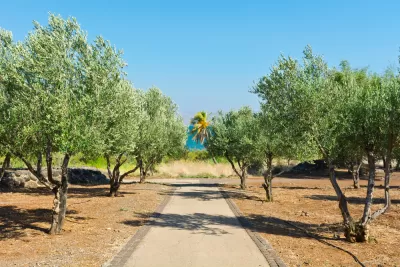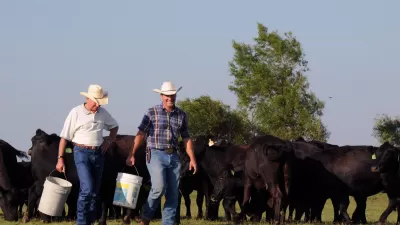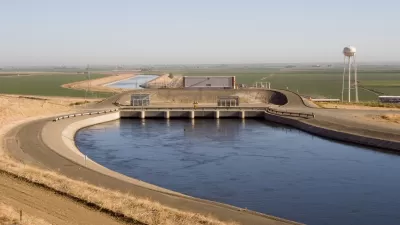The Farm Bill is one of the federal government's biggest, most controversial (yet still intractable) bills. The Trump Administration has plans for change.

"The Trump administration wants to slash the federal government’s biggest source of funds for conservation on private land," reports Eilís O'Neill.
Those cuts would come from the Farm Bill, which was most recently updated in 2014. According to O'Neill, "[t]he Trump administration is proposing cutting 22 percent, or $1.3 billion per year, out of the Farm Bill’s conservation budget."
As explained by O'Neill, the conservation budget traditionally included in the Farm Bill is a persistent source of controversy. Critics say the Farm Bill's funding formula pays farmers to do what they would be doing anyway—not farming their least productive land. To counter that point, O'Neill cites Erik Lichtenberg, a professor of agriculture economics at the University of Maryland who has studied the issue. "He says, though estimates vary, it’s pretty certain Farm Bill programs do lead to farmers conserving land they would otherwise farm."
Despite that endorsement, Lichtenberg says the Farm Bill is in need of reform—to shift conservation funding toward verifiable environmental benefit. The cuts proposed by the Trump Administration would not achieve those effects, however.
The administration proposes saving money by capping rental payments and excluding farmers who make more than $500,000 per year from the programs.
That makes the programs “more like income support for farmers than paying for environmental improvements,” Lichtenberg says.
FULL STORY: 6 things to know about conservation and the Farm Bill

Alabama: Trump Terminates Settlements for Black Communities Harmed By Raw Sewage
Trump deemed the landmark civil rights agreement “illegal DEI and environmental justice policy.”

Planetizen Federal Action Tracker
A weekly monitor of how Trump’s orders and actions are impacting planners and planning in America.

The 120 Year Old Tiny Home Villages That Sheltered San Francisco’s Earthquake Refugees
More than a century ago, San Francisco mobilized to house thousands of residents displaced by the 1906 earthquake. Could their strategy offer a model for the present?

In Both Crashes and Crime, Public Transportation is Far Safer than Driving
Contrary to popular assumptions, public transportation has far lower crash and crime rates than automobile travel. For safer communities, improve and encourage transit travel.

Report: Zoning Reforms Should Complement Nashville’s Ambitious Transit Plan
Without reform, restrictive zoning codes will limit the impact of the city’s planned transit expansion and could exclude some of the residents who depend on transit the most.

Judge Orders Release of Frozen IRA, IIJA Funding
The decision is a victory for environmental groups who charged that freezing funds for critical infrastructure and disaster response programs caused “real and irreparable harm” to communities.
Urban Design for Planners 1: Software Tools
This six-course series explores essential urban design concepts using open source software and equips planners with the tools they need to participate fully in the urban design process.
Planning for Universal Design
Learn the tools for implementing Universal Design in planning regulations.
Clanton & Associates, Inc.
Jessamine County Fiscal Court
Institute for Housing and Urban Development Studies (IHS)
City of Grandview
Harvard GSD Executive Education
Toledo-Lucas County Plan Commissions
Salt Lake City
NYU Wagner Graduate School of Public Service





























